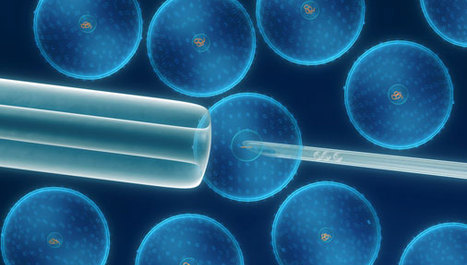Stem-Cell Therapy is the use of stem cells to prevent or treat a condition or disease.
Bone marrow transplant is the most widely used stem-cell therapy. But some therapies derived from umbilical cord blood are also in use. Research is underway to develop various sources for stem cells. And to apply stem-cell treatments for neurodegenerative conditions and diseases, heart disease, diabetes, and other conditions.

Bone marrow transplant is used for the treatment of cancer patients with conditions such as leukemia and lymphoma. This is the only form of stem-cell therapy that is widely practiced. During chemotherapy, most growing cells are killed by the cytotoxic agents. These agents, however, cannot discriminate between leukemia or neoplastic cells, and the hematopoietic stem cells within the bone marrow. It is this side effect of conventional chemotherapy strategies that the stem-cell transplant attempts to reverse. A donor’s healthy bone marrow reintroduces functional stem cells to replace the cells lost in the host’s body during treatment. The transplanted cells also generate an immune response that helps to kill off the cancer cells. This process can go too far, however, leading to graft vs. host disease, the most serious side effect of this treatment.
Another stem-cell therapy called Prochymal, for the management of acute graft-vs-host disease in children who are unresponsive to steroids. It is an allogeneic stem therapy based on Mesenchymal Stem Cells (MSCs) derived from the bone marrow of adult donors. MSCs purified from the marrow, cultured and packaged, with up to 10,000 doses derived from a single donor. The doses stored frozen until needed.
What are stem cells?
Stem cells are primitive blood-forming cells that normally live in the bone marrow. They divide and mature into all the different types of blood cells (red cells, white cells, and platelets), including the cells of our immune system. They are essential for our survival as they are the source of all of our blood cells. Stem cells are collected (harvested) directly from the bone marrow (bone marrow transplant). Or sometimes they are mobilized out of the bone marrow and collected from the bloodstream (peripheral blood stem cell transplant). Stem cells at also collected from umbilical cord blood of newborn babies (cord blood transplant).
What is a stem cell transplant?
A stem cell transplant is a process that involves replacing blood-forming cells called stem cells. This process replaces those damaged stem cells that result out of high doses of chemotherapy or radiotherapy. High dose therapies sometimes used because they give some people a better chance of cure or long-term control of their disease. Sometimes stem cells needs replacement because they become diseased (for example in leukemia) or poor (for example in aplastic anemia).
Types of transplants
The two main types of transplants are – allogeneic and autologous.
In an allogeneic transplant, the stem cells donated from another person, a genetically matched stem cell donor. An autologous transplant uses the patient’s stem cells, collected in advance and returned to them after they receive high doses of chemotherapy. Allogeneic transplants considered more complicated than other types. And, therefore, carry more short and long-term risks than autologous transplants.
The type of transplant given to you depends on some factors. These include the type of disease you have, your age, general health, the condition of your marrow. And whether your stem cells can be used or you would benefit by receiving donated stem cells.
A stem cell transplant is not necessarily the best option for everyone. Some people may not tolerate it. Also, many people do not need a transplant and successfully treated using a less intensive approach. For others, a transplant is the only option which offers a prospect of a cure, or long-term survival.





